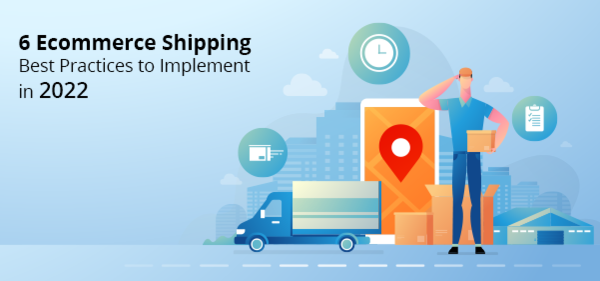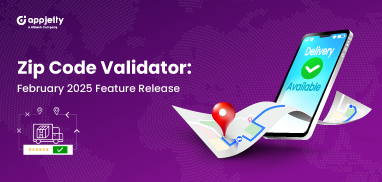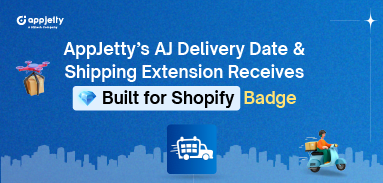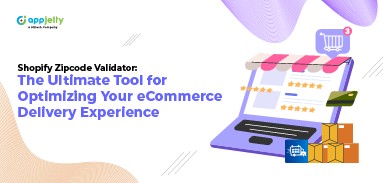It takes 20 years to build your brand but only 5 minutes to lose it.
While launching a new business, the first thing you should do is build an online store and Promote your brand. You should create awareness to reach customers. After all, there’s no business without customers. The next step should be to provide a smooth shopping experience. What benefit would it be if you can’t deliver to your customers?
Shipping can make or break your business. You can use tools like Shopify Delivery Date app to streamline your deliveries. To know about the best practices that you can implement to improve your Shopify store shipping and delivery in 2021 and 2022, keep reading.
1. Define your Goals
Every business has some specific goals. Similarly, you may have some goals to achieve with your deliveries for example, conversion, reach, sales, customer satisfaction, etc. Hence, it’s advisable to state your objectives. It will help you define the type of shipping you want to offer. A few areas that you can focus on are:
- ConversionsIf your goal is to attract more customers, you shouldn’t levy hefty shipping charges. Huge amounts will force customers to abandon products in cart. According to a PayPal study, 44 percent of customers abandon their products in cart due to high shipping charges. To avoid this, you can provide them with free shipping. This tip is also backed by stats. Oberlo, in a 2020 report stated that the number one reason customers buy online is to avail the free shipping that eCommerce stores offer. A Deloitte study revealed that 85 percent of customers prefer free shipping over fast shipping.Hence, prioritize free shipping if you want more customers to make purchases. You can also provide them with multiple shipping and payment options. The more options they have, the better it will be for your business.
- Average Order ValueIf you want customers to buy more products, provide free shipping. We know that free shipping is not actually free. It means low margins for you. But there’s no option. Thanks to big brands, customers now expect all online stores to offer free shipping. And you can implement it with a simple trick. Check your profit margins and see it doesn’t affect it. Apply strategies like Amazon does – offer free shipping on a specific purchase threshold. Amazon, for example, offers free shipping on purchase above $25.
- CostsDecreasing costs is a major concern for most of the industries. If your goal is to reduce costs, try outsourcing fulfillments. You can even switch to less expensive courier services for deliveries. If you’re doing it yourself, bring in apps like Shopify Delivery Date app that will help you reduce operational costs with process automation.
- Wide AudienceAccording to Pitney Bowes report, half of the US consumers buy online products cross-borders. Almost ¼ of eCommerce stores will be cross-borders by 2022. So, if you too want to expand your business reach, provide options like in-store pick-up, local delivery, fast delivery, less international shipping charges, etc.
2. Offer Multiple Shipping Options
Do you know the reason eCommerce business flourished? Convenience – definitely! Multiple options is the actual answer. Customers like exploring multiple options – whether they are buying apparel or an electronic gadget. Similarly, they need convenience and comfort of purchasing their selected products in their preferred shipping and delivery methods. For example, they may prefer an express delivery in a specific time duration or look for same-day or next day delivery.
Apart from this, there might be various parameters such as distance, weight, location, etc. affecting the shipping cost. Hence, offer multiple shipping options – free in-store pickup, table rate and flat rate box shipping, same day and next day delivery, and free shipping.
- Turn off free delivery for local customers and promote free in-store pickup for local customers and implement upsell and cross-sell ideas while they are in store.
- Set different shipping rates based on customer location, item size, and weight. It works best if you ship products in multiple zones.
- Implement flat rate box shipping, i.e., show live rates to customers based on the number of orders.
- Turn on same day and next day delivery for local customers. Make it a must for perishable items. Apply surcharges to profit from same day and next day delivery options. Use Shopify delivery date app to manage these orders.
- Offer free shipping when purchase total exceeds a specific amount so customers can make more purchases to avail that offer.
3. Provide Clarity
Keep everything simple and crystal clear. Provide customers clear information about shipping dates, policies, deliveries, etc. Add all the data on your website and in a place where it’s easily visible to customers. Maintaining transparency helps you avoid disputes and cart abandonment during checkout. For example, be clear about your shipping charges. If there are specific terms and conditions for order cancellation and return, mention those. While adding the fee, show an item wise detailing, i.e., base amount, taxes, shipping charges, and more.
4. Let Customers Take Charge
Fast delivery, free shipping are the primary factors to reduce cart abandonment. However, if you want to enhance customer experience, let them select the delivery date and time of the order as per their convenience. This feature is likely to reduce returns and undeliverables as product will be delivered at time when customers are available to receive it. For example, if they realize that they are not available on the selected date and time, let them change it to their preferred slot. You can do so by integrating a Shopify delivery date app.
The app will provide you with all the features that would improve your customers’ shopping and delivery experience. For example, they can opt for a call before delivery to ensure that they are available to pick the parcel or choose no contact delivery. Plus, they can add notes and comments before checkout to personalize their shopping experience.
5. Automate Processes
You can handle everything manually but you shouldn’t because manual processes are time consuming, cause miscommunication, and result in data loss.
Streamline your delivery process with a Shopify delivery date app. This will help you manage multiple orders in a day. Besides, you can offer same day delivery and even restrict the delivery count by adding the cut-off time. With the app, you can configure shipping options – set minimum and maximum number of deliveries, and order processing time – specify working and non-working days. You can manage all the orders by defining a work week, and adding order details with a thank you email.
Other features of Shopify Delivery Date app include customizable delivery date picker, restrict delivery period, add minimum order processing time, view deliveries in calendar, print packing slip, etc.
6. Keep Customers in Loop
If you think that successful checkout is the last step in the customer journey, you’re wrong. The effort to improve customer experience actually starts after checkout when customers are waiting for their deliveries. Hence, provide them with a post purchasing experience by allowing them to track their order status at every stage. Instead of directing them to order tracking pages and third-party experiences, customize their experience.
You can do so by customizing the design of the tracking page and targeting with relevant content as per their history. Plus, keep communication intact. Send emails and messages to keep them posted about their order deliveries, about new offers, products and more.
Create Lasting Impression
Connect emotionally with your customers. Make them feel that they are not purchasing from a random store. Most importantly, improve their overall experience by automating your shipping and delivery process with Shopify Delivery Date app.
To know how it can help you, give it a try.
All product and company names are trademarks™, registered® or copyright© trademarks of their respective holders. Use of them does not imply any affiliation with or endorsement by them.





